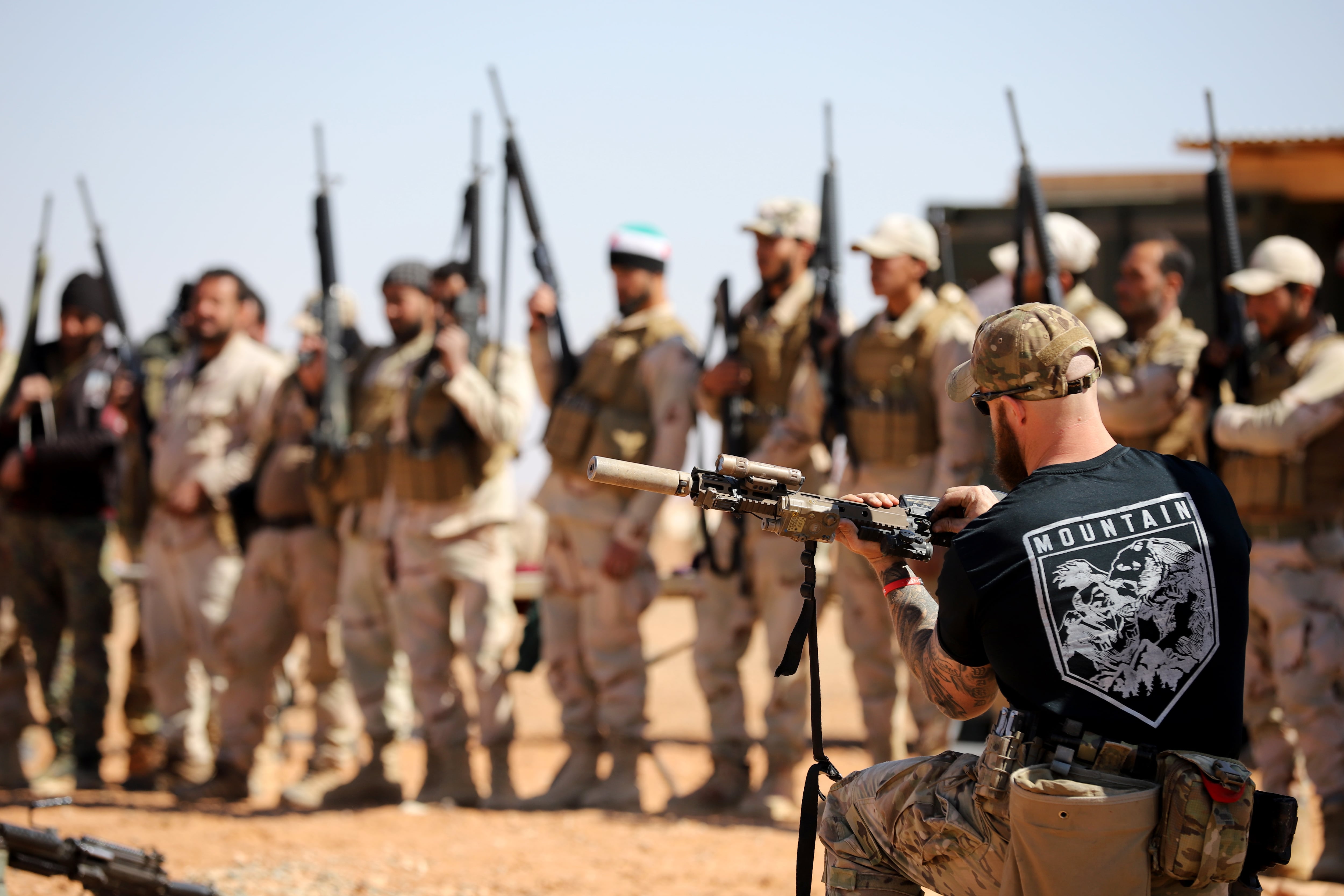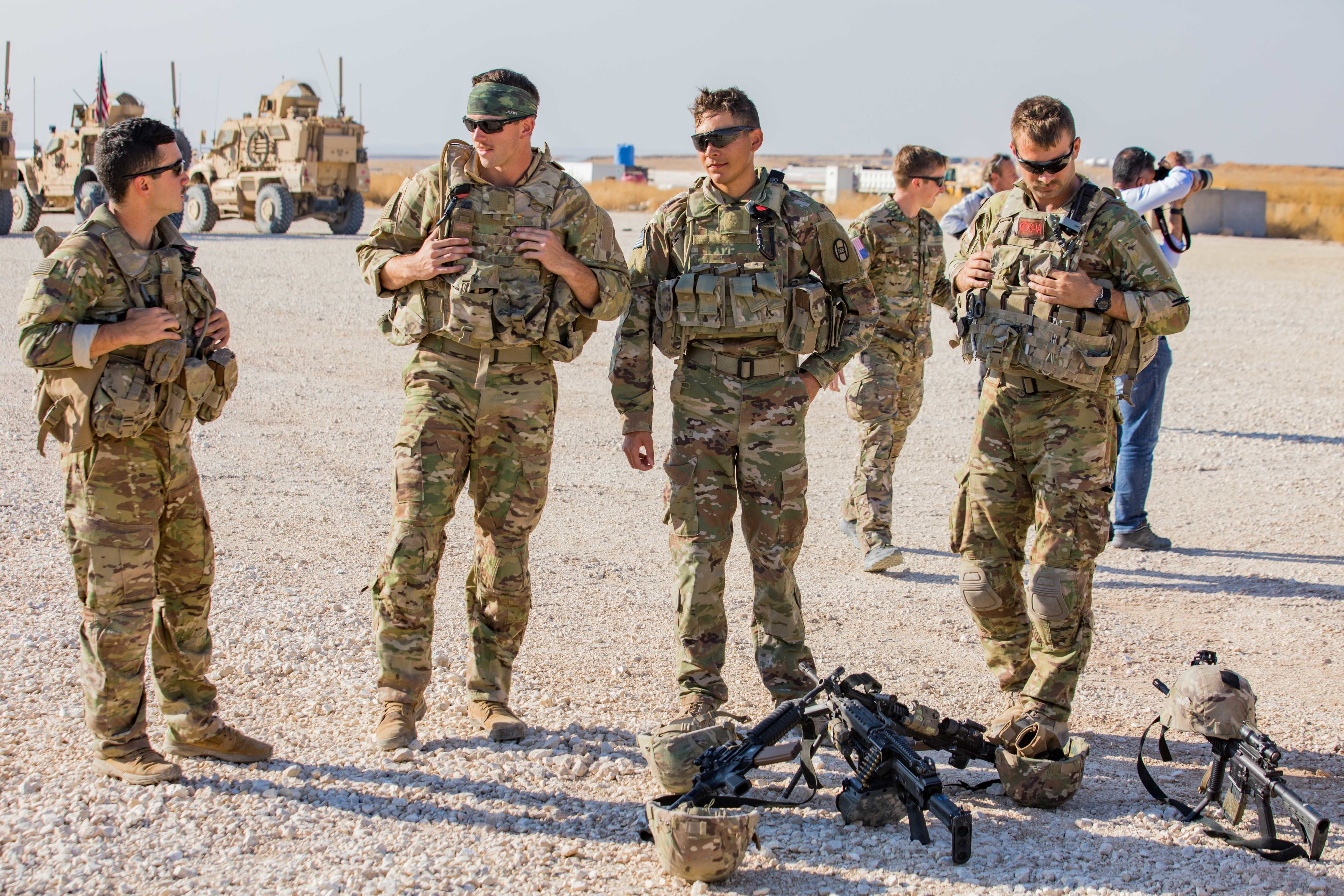Iraqi and Syrian forces still depend on foreign air support, even though the U.S.-led coalition has largely shifted away from hands-on training to advising remotely out of a few consolidated bases, according to an inspector general report on the anti-Islamic State mission released Tuesday.
Coalition aircraft conducted dozens of airstrikes and provided aerial intelligence gathering in both countries during the final months of 2020. The high quality video feeds and lengthy flight times of coalition intelligence, surveillance and reconnaissance aircraft are the envy of Iraqi military planners. And Syrian militias, which have no air assets, continue to rely on their coalition backers for those resources too.
Troop levels in Iraq decreased from 3,000 to 2,500 this fall and winter as part of a last-minute attempt by the outgoing Trump administration to fulfill campaign promises of ending America’s long wars. That reduction did not significantly impact the anti-ISIS mission, called Operation Inherent Resolve, according to the IG report.
Estimates of the number of ISIS fighters in Iraq and Syria vary widely, from 8,000 to 16,000. Since the loss of their physical caliphate, ISIS has operated mostly in small cells located in rural areas using small arms, IEDs and assassinations.
Iraqi security forces did show the ability to carry out more counter-ISIS operations on their own in the final months of 2020. The Iraqi Counter Terrorism Service, for instance, ran 172 unilateral missions against ISIS, up 50 percent from the previous quarter. Those operations did not rely on coalition helicopters, and instead used Iraqi army assets.
RELATED

In one small success, Iraqi forces used an armed intelligence aircraft to find and kill a high value ISIS fighter, which coalition officials described as “a sign of progress.” However, Iraqis continued to rely on coalition airpower during complex operations, “particularly those that required time-sensitive targeting,” the IG report stated.
King Air 350 twin-turboprop aircraft are the Iraqi air force’s most capable theater-level intelligence gathering platform. They’re used when available, but Iraqi military planners have also developed an expectation for high quality video feeds after working with coalition assets. King Air 350s have lower quality systems and can only remain on station for two to three hours, compared to the 18 hours of a modern drone.
Iraqi air force F-16 fighter jets also haven’t been included on coalition air tasking orders since advisers were pulled from Balad Air Base, north of Baghdad, at the start of 2020.
“Despite this, the security spokesperson for the Iraqi Prime Minister’s office reported that Iraqi F-16s conducted strikes on ISIS targets on November 7,” the IG report reads.
U.S. Central Command also noted in the report that “Iraqi F-16s conducted two strikes during the quarter, utilizing GBU-12 laser-guided bombs with assistance from the Coalition Force Strike Cell” located in Baghdad.
RELATED

Still, the vast majority of Iraqi F-16 missions were for training. Of the 271 sorties cataloged by U.S. Central Command, all but four were dedicated to training.
Meanwhile in Syria, about 900 U.S. troops remain deployed along in the northeastern part of the country, guarding oil fields and partnering with militias.
The U.S.-backed Syrian Democratic Forces, “which has no air assets, relied on Coalition air support, including for intelligence, surveillance and reconnaissance, and partnered with Coalition forces during most of its operations,” according to the report.
Inherent Resolve has been reducing the number of accompanied operations with the SDF, but “most operations were still partnered.”
Between October and early December, the SDF ran 34 operations against ISIS in the “Eastern Syria Security Area” that coalition troops also work in. Of those, 27 operations were partnered with coalition forces. The seven independent operations still included coalition advising.
Only special operations forces accompanied the SDF on targeted operations, or supported those missions from a nearby support site, the IG report added.
Kyle Rempfer was an editor and reporter who has covered combat operations, criminal cases, foreign military assistance and training accidents. Before entering journalism, Kyle served in U.S. Air Force Special Tactics and deployed in 2014 to Paktika Province, Afghanistan, and Baghdad, Iraq.




